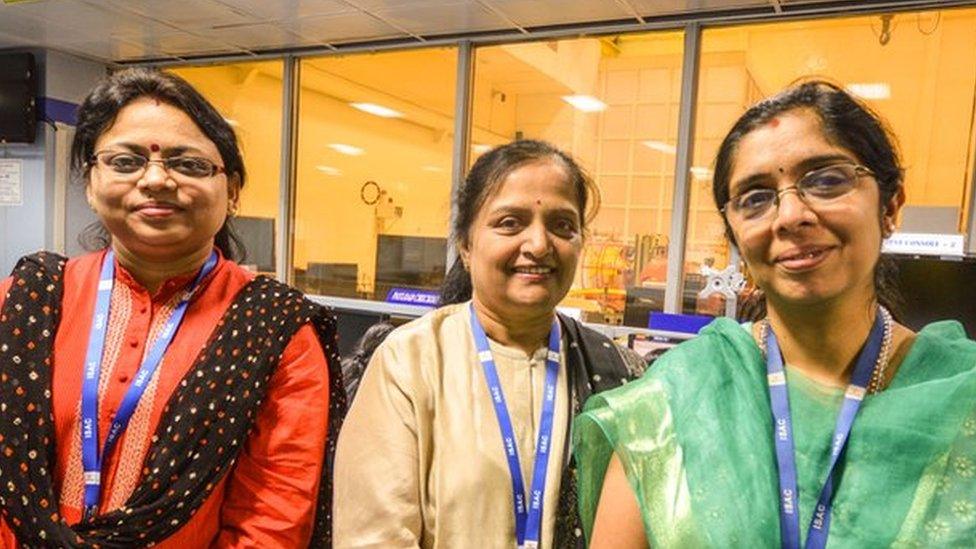The restaurant that has a city eating out of its hands
- Published

The restaurant was set up in 1942 by three brothers
The most iconic restaurant in the southern Indian city of Bangalore is the 92-year-old MTR, or the Mavalli Tiffin Room. It's also the place that many say serves the "world's best dosa", writes the BBC's Geeta Pandey.
It's lunch time and the kitchen is a hive of frenetic activity. Dough is being rolled, round bread is being deep fried and men are energetically stirring huge pots of lentil soups and rice dishes.
Minutes later, as the front doors are thrown open, customers begin to walk in. They queue up in front of the counter to buy meal coupons and then are ushered into the dining hall and seated.
The rooms are basic, with tables, red plastic chairs and bare walls.
Soon, waiters carrying steel buckets troop into the dining hall, ladling out scoops of steaming food onto plates.
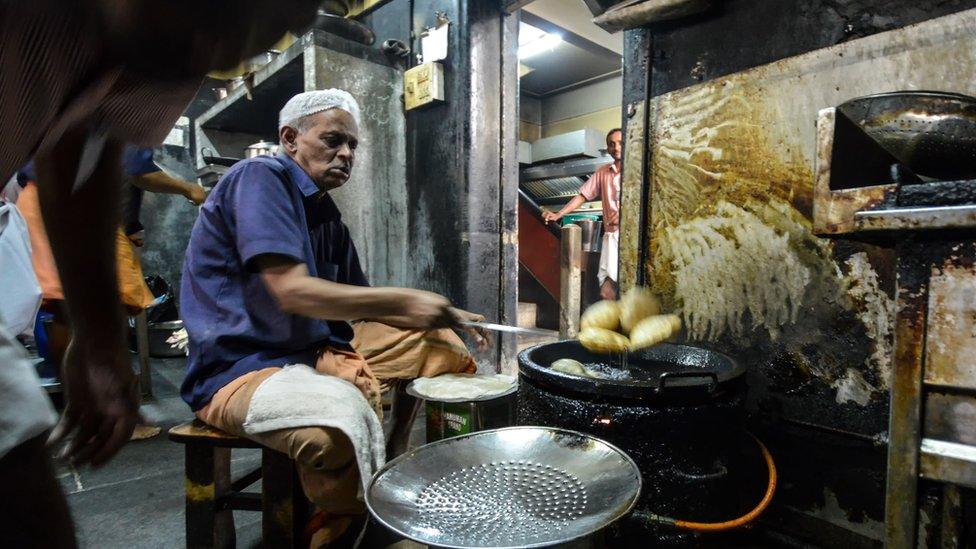
The restaurant has an open kitchen and guests are allowed to go in
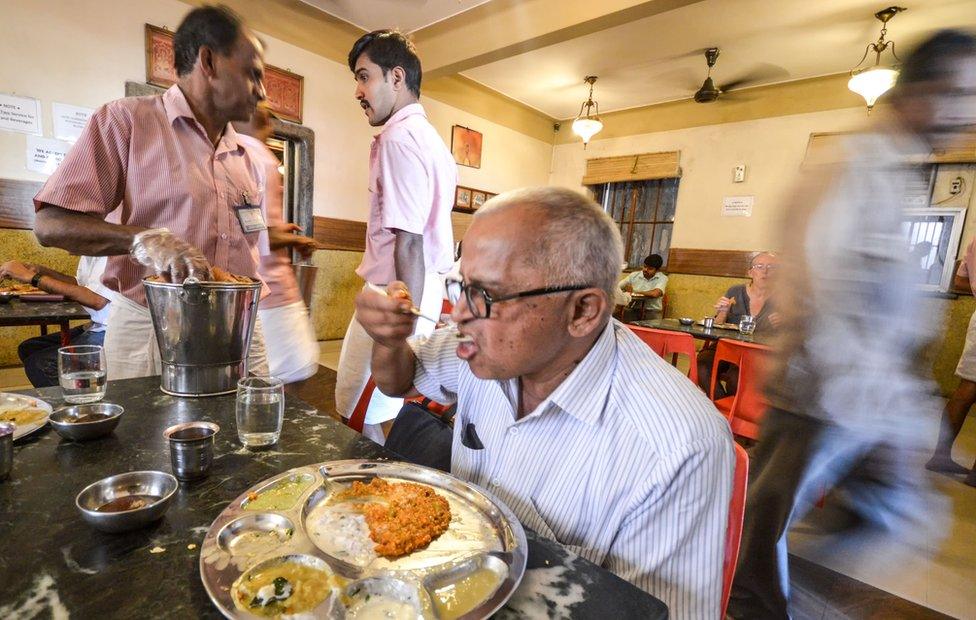
HV Rangaswamy first dined at the MTR 40 years ago when he was a student
It's an all-you-can-eat set meal and on the menu today are beetroot and carrot vegetables, deep fried bread, lentil soup, different types of rice dishes, sweets, fruits served with ice cream and a drink of grape juice.
Among the diners is HV Rangaswamy, a 63-year-old chemist from Hasan district, who first visited the restaurant 40 years ago with his friends when he was a young man studying in Bangalore.
"Since then, I've brought my brothers and sisters and my wife and children here. My entire family loves this place," he tells me.
Mr Rangaswamy, who comes to Bangalore once a week on business, says he never misses an opportunity to eat here since the food is "excellent" and the "ambience is nice".
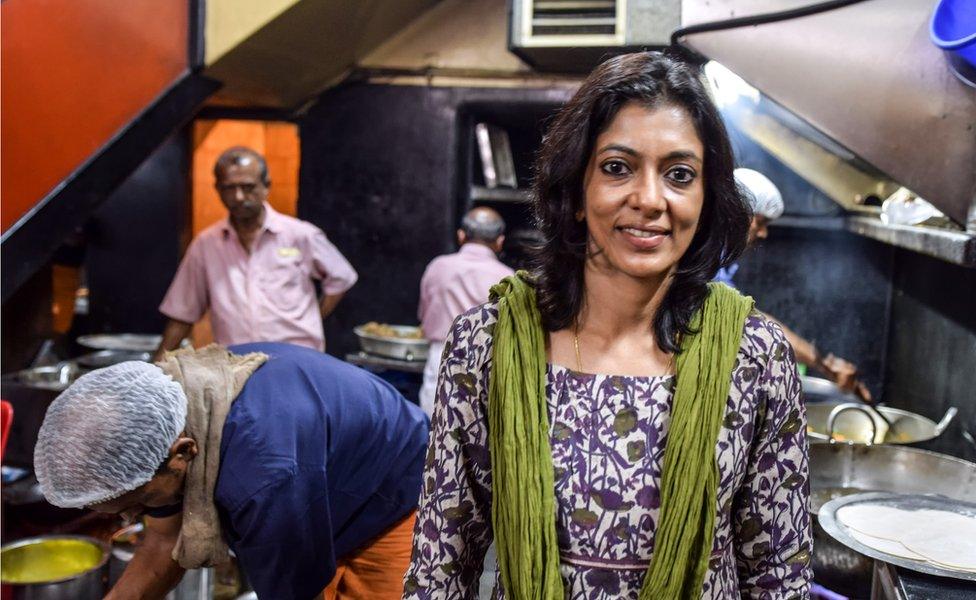
Hemamalini Maiya is the third generation owner of the restaurant
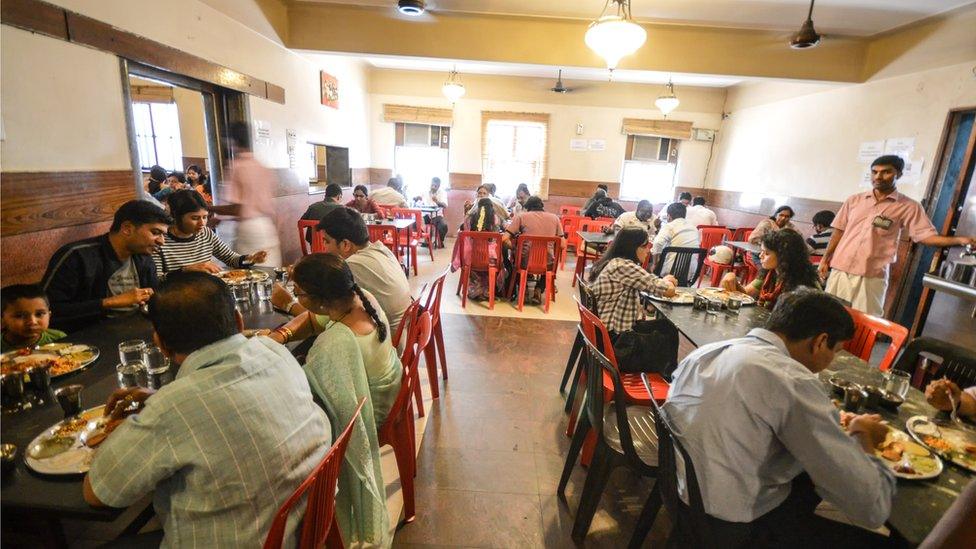
The restaurant, which is spread over two floors, can seat 150 people at a time
He finds the set meal, which costs 240 rupees ($3.50; £2.80), a bit expensive, but says he keeps returning to the place because "the food quality remains consistent".
"It tastes just the way it did when I ate here the first time all those years ago."
Other diners agree with his assessment.
A group of women sitting on a nearby table say they've been meeting at the restaurant regularly for several years.
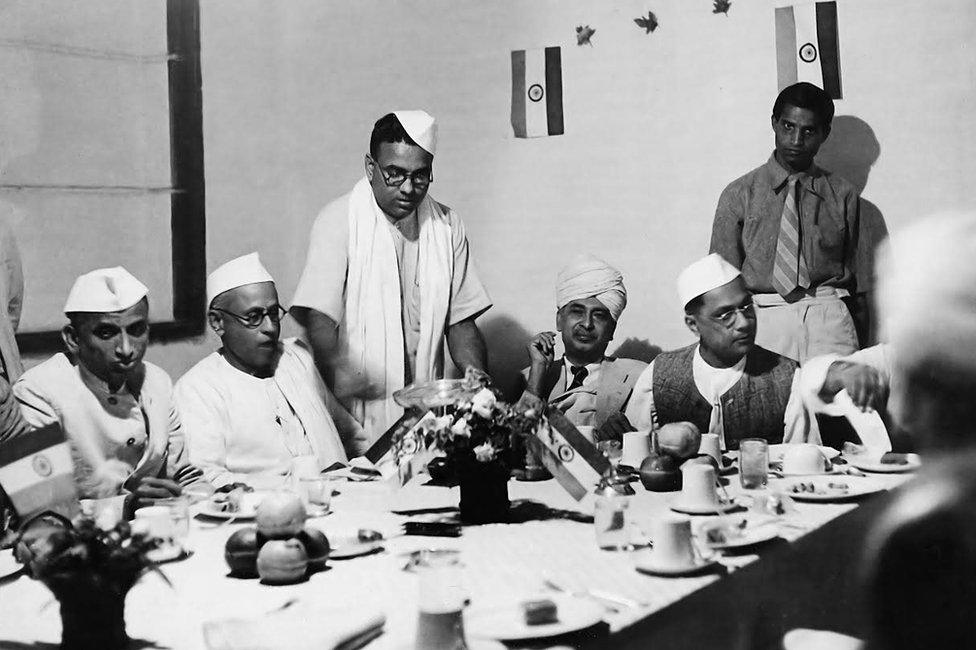
The restaurant was set up in 1924
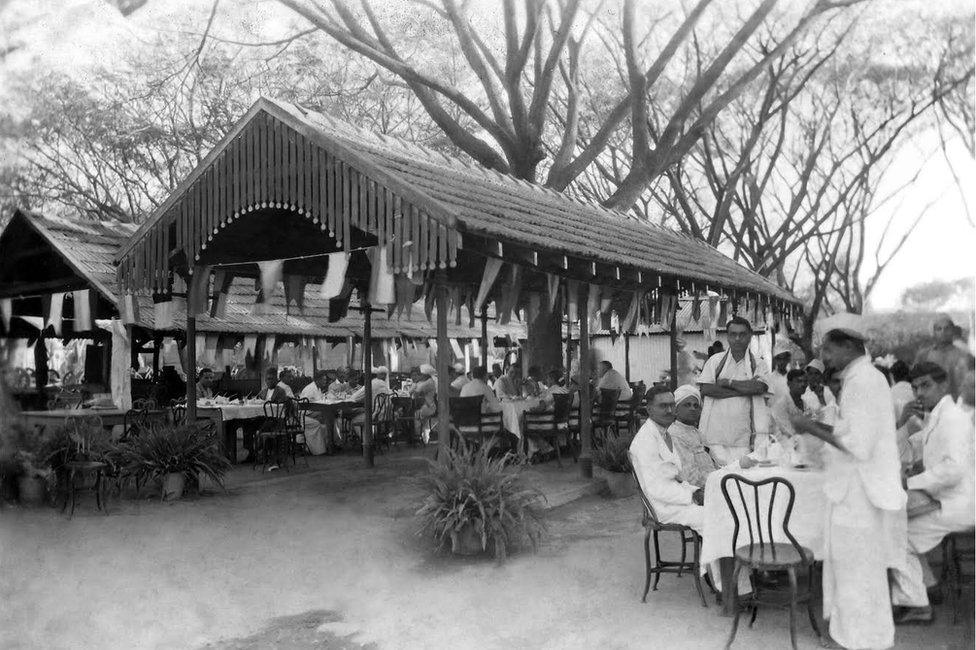
It moved to its present location in Lalbagh in 1960
Housewife Sangeeta Jain describes the food as "awesome" and "very tasty" and the fact that the kitchen is "very neat and clean".
"I had no breakfast today and will also skip dinner tonight. Every time I come here I eat too much," adds her friend, Sushila Jain.
The vegetarian restaurant, which is spread over two floors, can seat 150 people at a time and it's soon filled up. About two dozen people sit in the lounge, waiting for their turn.
"About 2,000 people eat here everyday," says Hemamalini Maiya, the third generation owner of the restaurant. "At the weekends, the numbers generally double."
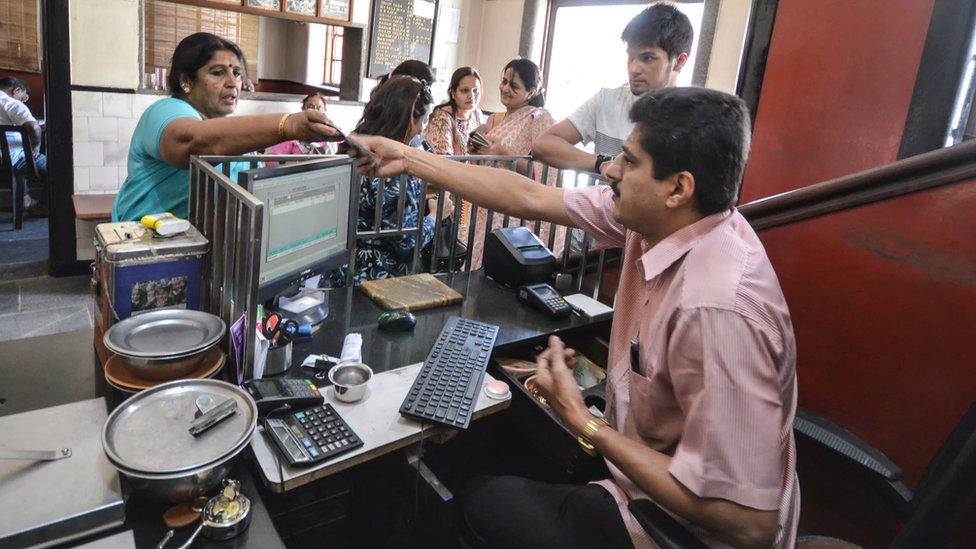
The restaurant serves about 2,000 people daily
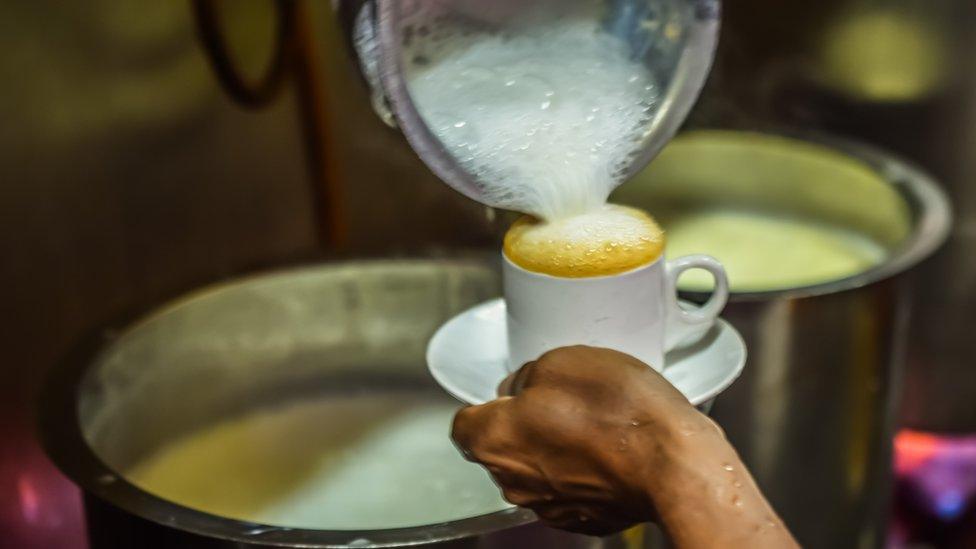
Many people have been coming to the restaurant for coffee for 40 to 50 years
The restaurant was started by Ms Maiya's great-uncles in 1924, four years after they had left their tiny village in Udupi district to work as cooks in the homes of affluent Bangaloreans.
From a hole-in-the-wall set-up, the Maiya brothers - Parameshwara, Ganappayya and Yagnanarayana - began by selling piping hot idlis (savoury rice cakes), vadas (savoury fried donuts), dosas (pancakes made from fermented batter) and filter coffee.
Their food was so good that soon they had the city eating out of their hands.
But little did they know that their eatery would one day become so popular that it would be considered a legend, with branches in India and other parts of the world too.
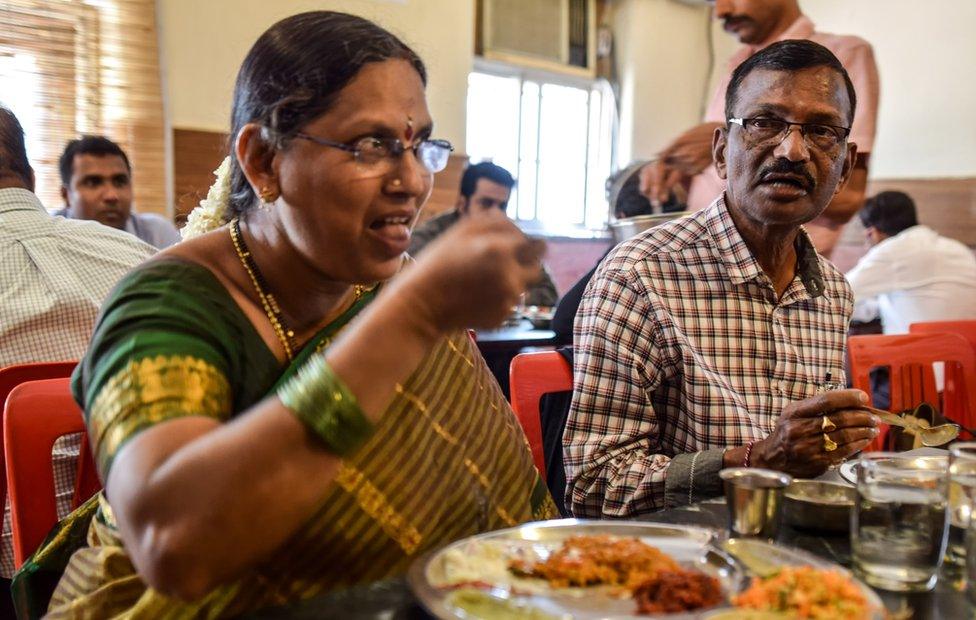
City residents and tourists make up the restaurant guests
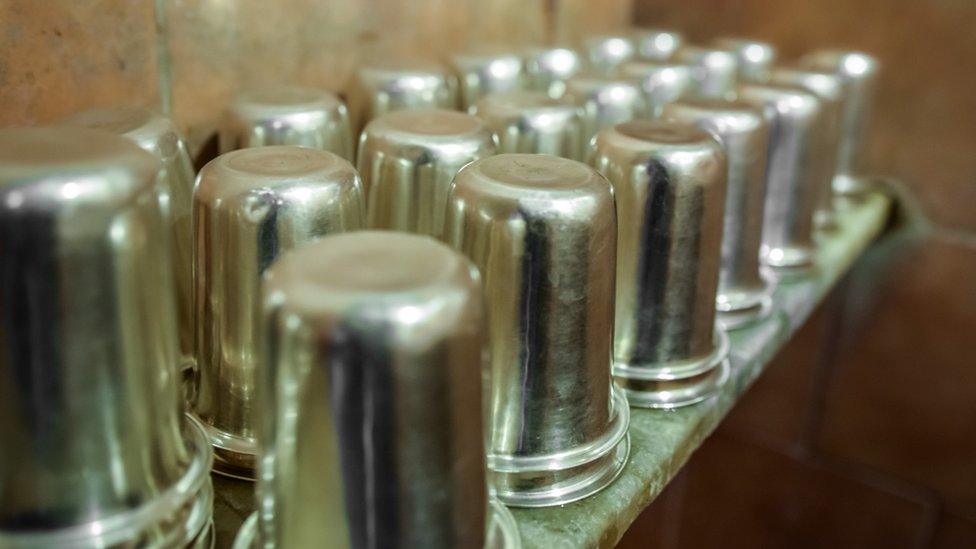
Coffee is still served to guests sitting on the upper floor in silver glasses
The restaurant, which moved to its present location on Lalbagh Road in 1960, today has 13 branches - nine in Bangalore, one in Udupi and three abroad.
Ms Maiya, who took over the running of the restaurant in 1999, says some of their patrons have been coming every morning for coffee for the past 40 to 50 years.
The restaurant's popularity, she says, is because "coming to MTR is like coming back home, it's a trip of nostalgia. And that our food is top quality".
She says consistency and quality is maintained because they still follow the recipes of her great-uncles and the cooks who have been with them for a long time.
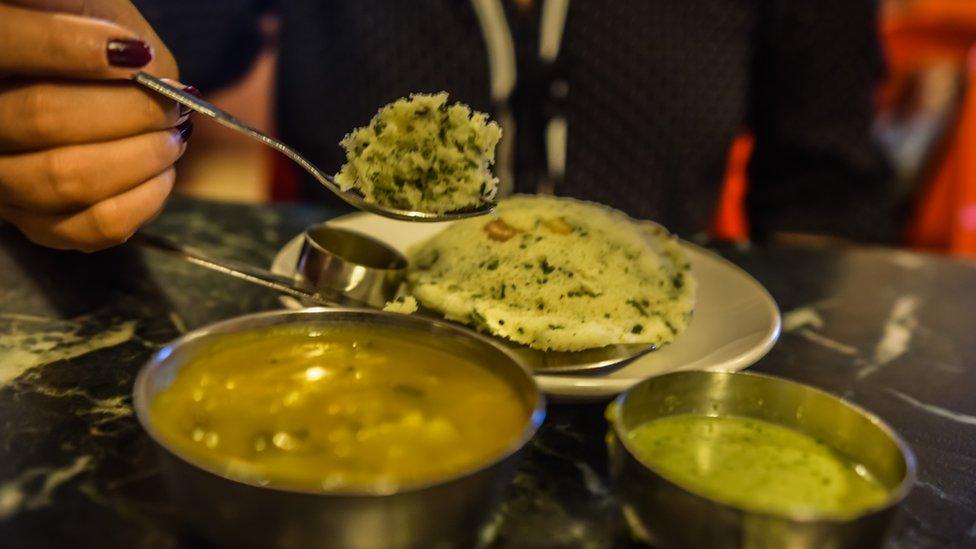
Idlis were always made with rice until the 1942 famine when because of a shortage of rice, MTR began making rava (semolina) idlis which have become hugely popular now
"Some cooks have worked with us for more than 35 years or so. Out oldest cook died a few years ago, he had worked with my grand-uncles."
The elaborate set meal is fit for kings and I'm full by the time I finish tasting all the dishes.
As I prepare to leave, I'm advised by Rekha Jain, one of the diners, to try the MTR's masala dosa, which is served in the hours post-lunch.
"I've been coming here since my childhood days and I can say that their dosa is the best in the world," she says.
I'm tempted, and the next day, I return to the restaurant just as it opens for snacks at 3:30pm.
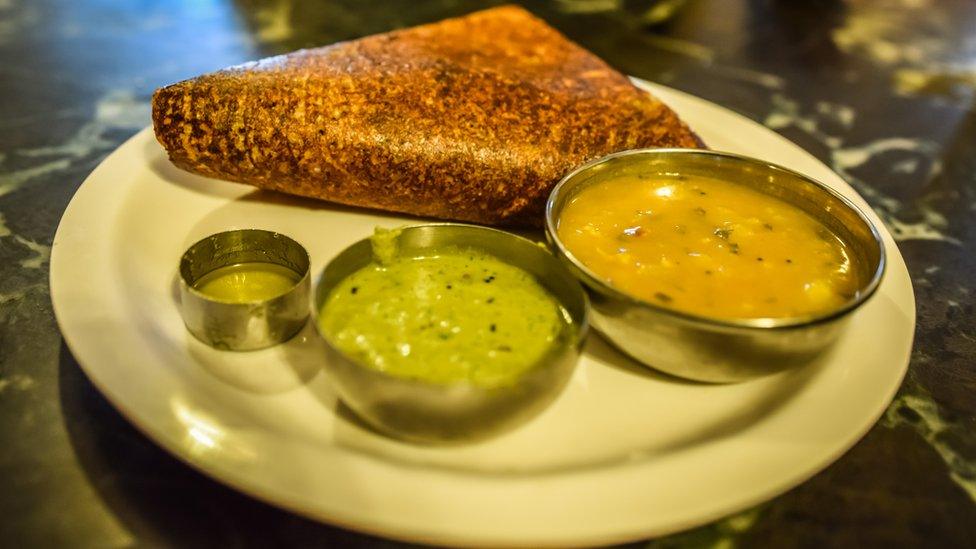
Is this the best dosa is the world?
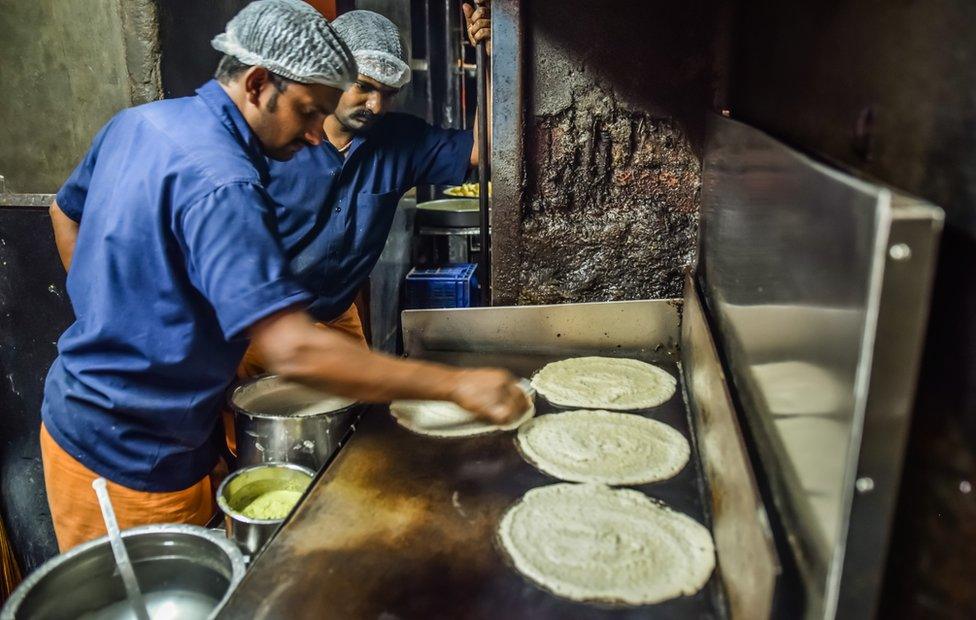
Cooks make dosas from fermented batter
In a tiny corner room in the kitchen, on a huge cooking plate, a young man scoops out ladles of dough, spreading it out into thin circular pancakes. He pours a spoon of ghee (clarified butter) on each circle, flips it around with a spatula to cook the other side, before flipping it back.
He spreads a helping of green chutney (sauce) and places a fistful of potatoes cooked with onions, mustard seeds and spices on top of them, and folds the pancakes into neat triangles before pushing them onto plates.
The dosa is served with a potato curry, green chutney and a spoonful of melted ghee (clarified butter).
I've eaten dosas in restaurants across India and some have been excellent too, but I think I have to agree with Rekha Jain. It is indeed the best dosa in the world.
Geeta Pandey recently spent 10 days working on a series of stories in Bangalore. This is her third report.
- Published7 December 2016
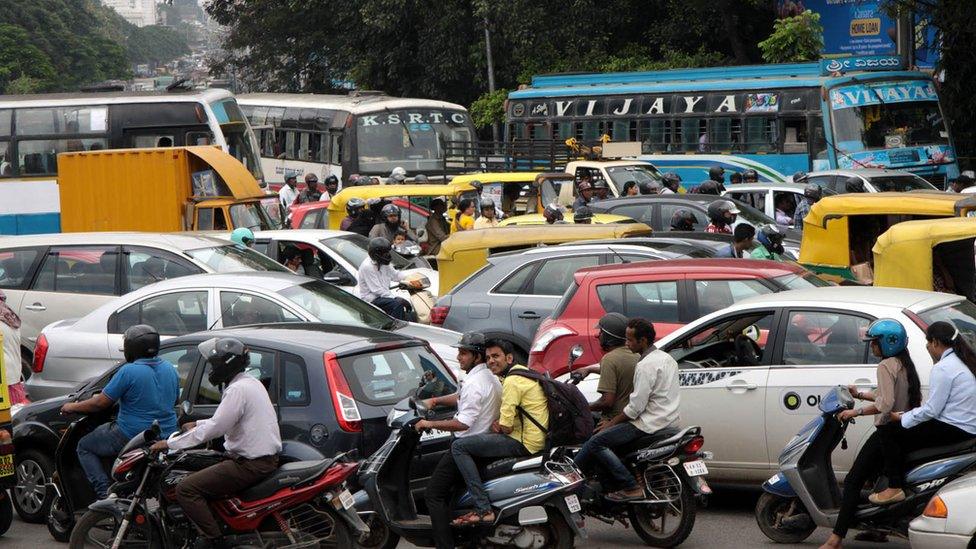
- Published12 December 2016
